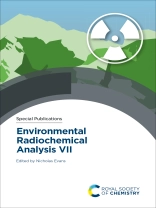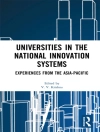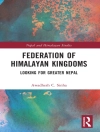Incidents such as nuclear weapon tests, accidents in nuclear power plants, transport accidents and accidental or authorised discharges from nuclear facilities have introduced anthropogenic radionuclides into the environment. Scientists need accurate analysis of these radionuclides in order to estimate the risk to the public from released radioactivity.
This book is an authoritative, up-to-date collection from leading scientists across the globe on environmental radiochemistry and radioecology, nuclear industry decommissioning, radiation detection and imaging, medical imaging, radioanalytical techniques and nuclear forensics. The research contributions were first presented at the 14th International Symposium on Nuclear and Environmental Radiochemical Analysis in September 2022.
Providing a key reference for graduates and professionals who work across fields involving analytical chemistry, radiochemistry, environmental science and technology, and waste disposal, this book is essential reading to aid risk analysis and protection.
Tabla de materias
Localisation, isolation and leaching of single hot particles from various environmental matrices in the vicinity of the Chernobyl nuclear power plant;Determination of transuranium elements produced by the Castle Bravo explosion;Coincidence and anti-coincidence gamma ray spectroscopy in radionuclide identification;Application of plutonium radiochronometry to understand material processing impacts for nuclear forensics;Application of radiocaesium microscale observation methodology to parmelioid lichen and ultrastructural analyses using STEM-EDS;Radionuclides for Health UK: improving UK access to radionuclides for molecular radiotherapy;Determination of Blue Carbon sequestration rates in the UK North Sea using lead-210 and complementary fingerprinting tools;A molecular dynamics study of helium clustering in high temperature plutonium dioxide;Fast Am, Pm and Sr separation after automated fusion of highly dense barite concrete;Development of microfluidic systems for actinide separation using functionalised methacrylate monoliths;Research reactor support for nuclear forensics studies and the development of a companion graduate course;Studies on distribution of 210Po and 210Pb activity and physico chemical effects of undisturbed alluvial clay soil in Belagavi district, Karnataka, India;Analysis of the sorption of Tc(IV) to some clay minerals with reference to radioactive waste disposal;Precise measurement of trace actinides using Phoenix TIMS;An investigation into the role of c-type cytochromes and extracellular flavins in the bioreduction of uranyl(VI) by Shewanella oneidensis using fluorescence spectroscopy and microscopy












